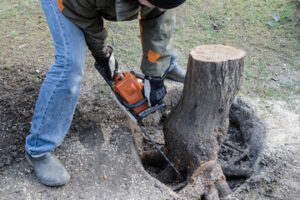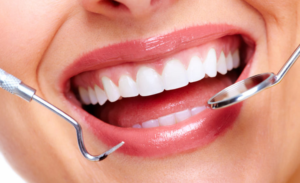Google ads (formerly known as AdWords) are a powerful marketing tool that can help you drive traffic to your website and accomplish your goals. They work with businesses of all sizes and are flexible enough to fit any budget.

The most important measurement of your Google Ads performance is ROI, or return on investment. This metric determines how well your ads are performing and whether you should continue with them. Get in touch with Outdoor Advertising Houston for professional support.
Using Google Ads, also known as Google AdWords, to promote your business offers can help you reach your marketing goals quickly. It’s easy to start a Google Ad campaign, and you can see results immediately. In fact, if you use the right keywords and optimize your ads for conversions, you can get a high ROI on your Google Ads investment. It’s important to use Google Ads as part of a comprehensive digital marketing strategy, though, to make sure your ads are seen by the most relevant searchers and potential customers.
Google Ads is a pay-per-click (PPC) advertising service that allows you to promote your products and services on Google Search, Google Maps, and other Google-affiliated sites. Google Ads uses sophisticated targeting options to ensure your ads are displayed in front of people who are likely to buy what you’re selling. It also provides measurable results, so you can track the effectiveness of your ads and make necessary adjustments.
Another benefit of Google Ads is that it’s easy to set up and scale, making it an affordable way to promote your business. You can choose your budget and target location, and you can even control how much you spend on each click. You can also customize your ads to suit your needs and target specific devices, including mobile phones.
Google Ads is a powerful tool for businesses of all sizes. Its ability to deliver targeted ads in a short amount of time makes it a valuable investment for any business. It also gives businesses a competitive edge over competitors by ensuring that their ads are always visible on top of search engine result pages. However, it is important to remember that Google Ads should be used as part of a comprehensive marketing strategy that includes organic search, content marketing, and social media. The benefits of Google Ads include immediate results, measurable results, and a high ROI. By focusing on the right audience, creating optimized ads, and connecting them to dedicated landing pages, Google Ads can increase sales or leads. It can also help businesses build brand awareness, remind customers of their products or services, and draw new visitors to their websites.
Google Ads
Google Ads is a powerful tool that can help you reach the right audience at the right time. But it’s important to understand what your goals are before using the platform. Whether you want to generate traffic, increase leads, or drive sales, knowing your goals will help you develop a customized strategy that can achieve them. Conducting thorough keyword research is a good place to start. Choose keywords that align with your business idea and are searchable by your target audience. Choosing the right keywords can make your ads more relevant to the people who see them, resulting in better performance.
Ads are based on an auction system that takes into account two factors: Quality Score and Maximum Bid. The advertiser with the highest score wins the ad position. The actual amount you pay for an ad can vary day to day. On days with more traffic or potential for better ad engagement, your spending can go up to twice your average daily budget.
In 2016, Google introduced smart bidding, which uses machine learning to automatically optimize real-time bids based on various signals and conversion data. This feature can significantly improve campaign efficiency and maximize your return on investment.
If you’re looking for a more comprehensive ad management tool, consider upgrading to Performance Max. This tool allows you to track all changes made to your campaigns and their impact on performance. It also enables you to create, pause and edit your ads from a single interface. You can even customize and preview changes before implementing them.
Google Ads offers a variety of targeting options to help you find the right audience. You can choose a specific demographic, geographic location, and device type. This can be helpful if you’re trying to sell products or services in a limited market. You can also target users who have visited your website or are interested in certain products.
Another feature of Google Ads is remarketing lists for search ads (RLSA). This campaign type runs remarketing ads on the Google Search network when users who have visited your site or a specific page on your website use search terms related to those pages. This remarketing option is an effective way to boost your business’s online presence and increase the likelihood of your leads becoming customers.
PPC
PPC is one of the fastest and most cost-effective ways to increase your brand visibility and website traffic. By using different types of PPC ads, you can target specific audiences and generate measurable results. Whether you want to drive sales, generate leads, or increase brand awareness, you can use Google Ads to meet your business objectives.
The first step in launching a PPC campaign is to choose the right keywords and appropriate ad creatives. Once you have done this, you can select a bid strategy that aligns with your goals. Then, you can link your ads to a relevant landing page that provides a clear path to conversion. Finally, you can set a budget that meets your marketing needs and enables you to achieve a high return on investment.
To maximize the effectiveness of your Google Ads campaigns, it’s important to track your conversions and adjust your ad spend accordingly. You can also use the change history feature to catalog past updates, including ad rotation, keyword additions, and sitelink additions. This helps you identify what’s working and what isn’t, and can help you justify increasing your ad spend.
Google’s auction-based search engine system determines your ad placements based on the value of the keywords you bid on, how well you match up with user search intent, and your quality score. The combined score of these factors determines your ad’s Ad Rank, which in turn determines where your ad will appear and how much you pay per click.
PPC advertising is a powerful way to reach potential customers at the exact moment they’re searching for your products or services. With a properly executed Google Ads campaign, you can create an effective strategy that will deliver measurable results and grow your business. To get the most out of your campaign, be sure to test new ad copy, ad creatives, and landing pages to reduce your average cost per click. You can also use Google Analytics to track your conversions and measure the ROI of your campaign.
Content marketing
Content marketing is a strategy that involves creating educational blog posts, videos, and other formats to connect with your ideal customer and position your brand as an expert. It can also drive more sales and increase brand loyalty. It’s important to create a strategic content marketing plan that aligns with your goals and is based on solid research. This will ensure that you are producing quality content and measuring results consistently.
To develop an effective content marketing strategy, it’s crucial to understand your ideal customer and the types of content that they will find helpful. You can do this by developing a buyer persona, which includes information such as their demographics, interests, pain points, and preferred content formats. Once you know your audience, you can develop a content schedule that will meet their needs and keep them engaged.
Using a content marketing agency can help you produce quality content that is measurable and aligned with your business goals. It will also save you time and money, allowing you to focus on your core business activities. A good content marketing agency will be able to guide you through the process of planning, creating, and optimizing your campaign, as well as track its performance to ensure that it is working as intended.
Emails are a valuable tool for content marketing, as they provide an intimate connection with your target audience. They can be used to share new products and offers, as well as engage with customers in a way that is less intrusive than traditional paid ads. However, if you want to achieve the best results from your email marketing efforts, you need to know how to write emails that will grab attention and inspire action.
Content marketing is a powerful strategy that helps businesses build trust with their prospects at scale. It allows them to communicate with potential customers on their terms, rather than relying on platforms’ algorithms and privacy concerns. Moreover, it can produce higher returns over time than paid advertising – especially if you produce evergreen content. Lastly, it’s critical to track your content marketing efforts so that you can improve and refine your strategy over time.








